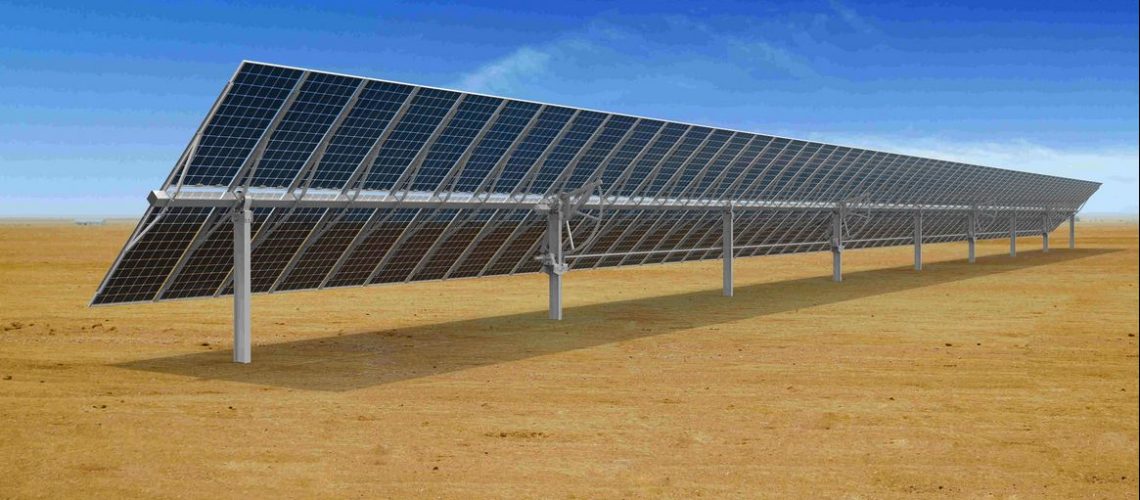As large format modules (LFM) have begun to take over the utility-scale solar space, design and engineering protocol from manufacturers across the solar value chain have had to change their practices accordingly, making tweaks in some instances and entire overhauls in others, in order to accommodate the new technology.
Tracker manufacturers have been especially subject to considerable design changes, with representatives from two of the industry’s biggest names meeting recently with pv magazine to highlight how their operations have evolved.
Another industry stalwart, Arctech Solar, has released a new white paper outlining the opportunities presented by stowing modules at a zero-degree angle in high-wind scenarios, a solution made possible by the advent of rigid trackers.
Arctech launched its newest stiff tracker product in October 2021: the SkyLine II 1P Tracker. Skyline II’s main points of innovation over more traditional, flexible tracker technologies are a pentagonal torque tube, which provides the product with larger bending and torsional capabilities, and a synchronous multi-point drive mechanism, which rigidifies the tracker enough to enable zero-degree stowing in instances of high wind.
Advantages of rigidity
This is the architecture and general design philosophy that Arctech believes will enable trackers to unlock the full value of large format modules, as safe operation and stowing in wind-prone areas has become a concern, due to the increased surface and sail area created by LFMs.
In the white paper, Arctech claims that not only does a zero-degree stow angle enable projects to expand geographically into higher-intensity wind zones, but it also prevents energy losses that would be incurred by other stow strategies and increases energy generation and revenue a “considerable” extent.
In a high wind speed event, traditional trackers needs to be stowed at a steep tilt angle, with the tracker nose down and the front panel surface facing the wind, in order to remain structurally stable and avoid torsional instability. The wind speed threshold that triggers this reaction is called the wind stow speed, and that trigger speed has to be lower than the known point of speed where structural damage and potential for catastrophic loss is initiated.
With the onset of LFMs, trackers got longer and wider, lowering rigidity and bringing the critical wind speeds down for all tilts. As a result wind stow thresholds declined to near 12 meters per second, a relatively common speed. If trackers are forced into stow functions at such a relatively common wind speed, modules will have less tracking time, meaning less energy will be generated and levelized cost of electricity, a critical metric for the financial viability of solar projects, will be raised.
For SkyLine II and any similarly-constructed rigid tracker, the the critical wind speed sits at 22 m/s, nearly doubling the parameters for wind a project can operate under.
Proving the point
To prove this, Arctech created a case study using A 100MW virtual solar farm near Amarillo, Texas; solar irradiance data for 2020 from the National Renewable Energy Laboratory’s NSRDB Physical Solar Model; and corresponding wind data for 2020 from the NASA Global Modeling and Assimilation Office’s GES DISC MERRA-2.
The study compared Arctech’s SkyLine II and SkySmart II (another rigid tracker offering), which have critical wind speeds of 22m/s and 20m/s and both stow at zero degrees, to a traditional tracker with a wind threshold of 16m/s and a 30-degree stow angle; a flexible tracker with a wind threshold of 14m/s and a 30-degree stow angle; and a hypothetical worst-case scenario with a wind threshold of 12m/s and a 45-degree stow angle.
The solar farms modeled under each scenario were then tested for how many hours of the year they spent stowed, what percentage of total hours in a year those stow hours accounted for; the estimated annual energy lost from stowing, represented as both a percentage of overall expected generation and by MWh, and the estimated revenue losses incurred by stowing, expressed in dollars and assuming a standard power contract price of $28/MWh.
Arctech’s SkyLine II spent just 15 hours, 0.17% of the the modeled year, in stow position, losing 204MWh in that time, roughly 0.09% of projected generation, for a financial loss of just over $5,700.
Arctech’s SkySmart II spent 38 hours, 0.43% of the the modeled year, in stow position, losing 262MWh in that time, roughly 0.12% of projected generation, for a financial loss of just over $7,300.
The traditional tracker spent 243 hours, 2.77% of the the modeled year, in stow position, losing 1,711MWh in that time, roughly 0.77% of projected generation, for a financial loss of almost $48,000.
The flexible tracker spent 608 hours, almost 7% of the the modeled year, in stow position, losing just over 3,750MWh in that time, roughly 1.7% of projected generation, for a financial loss of just over $105,000.
The worst-case scenario tracker spent 1,288 hours, 14.7% of the the modeled year, in stow position, losing nearly 9,300MWh in that time, roughly 4.17% of projected generation, for a financial loss of over $260,000.



